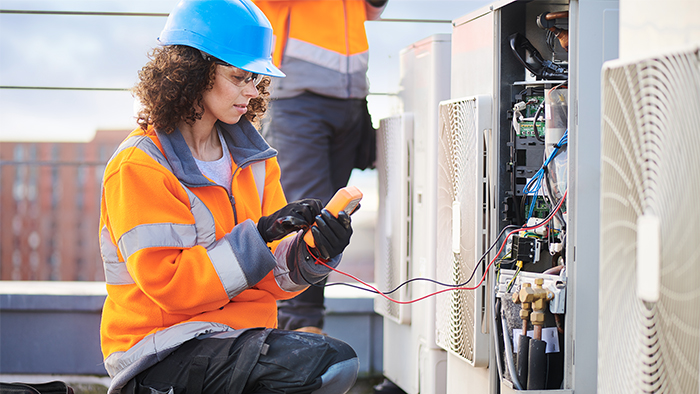H&M Finds Landlord Collaboration Key to Energy Goals
- By [ Erin Hiatt ]
- 06/29/2020
THE CHALLENGE
In looking for energy efficiency opportunities, H&M identified a significant need to retrofit HVAC rooftop units (RTUs) for many of their stores. Older, inefficient RTUs are responsible for wasting up to $3,700, in addition to consuming about 4.3 Quads of energy each year, according to the U.S. Department of Energy.
But utility incentives to improve store efficiency are often prohibitively difficult for retailers to apply for when the shopping center landlord owns the utility account. Access to the landlord’s utility account, lack of centralized landlord control of utility accounts, and lack of rebate application tracking tools for tenants were all challenges in navigating the process.
THE SOLUTION
H&M worked with Advance Rooftop-Unit Control Technologies provider Transformative Wave (TW) to begin retrofitting RTUs, starting first with locations where H&M is directly metered as the utility customer, then moving on to locations where the landlord is the direct utility customer. In 25 sites where the landlord is the direct utility customer, H&M and TW found collaboration between the landlord, tenant, and utility provider was key to establishing solutions and complete the retrofits.
Specifically, they asked landlords to sign a “pass-through letter,” authorizing the utility to work directly with tenants; asked utilities to ease access to the landlord’s account number; worked with landlords to develop a centralized process for project approvals, and encouraged utilities to develop online rebate application tools with a simple tracking capability.

OUTCOMES
-
Of the 25 stores considered for retrofits, H&M was able to secure utility rebates for retrofitting 12 RTUs, resulting in $24,000 of annual savings.
-
Room for Improvement: Difficulties in making successful connections with some of the involved landlords cut the project’s potential savings by more than 50 percent.
-
Had H&M received utility rebates for retrofitting all 25 units of the RTUs initially targeted, the savings would have reached about $70,000 each year.
-
Retailers, property developers and utility providers all have a role to play in making it easier for commercial tenants to take advantage of utility incentives and realize the full potential energy and cost savings tenants need to meet their ambitious sustainability goals.
Other retailers facing similar barriers can also work closely with utilities and landlords to execute a pass-through letter; ask utilities to modify any process that requires the landlord to provide the utility account number; work with landlords to develop a standard, centralized process for approvals; and encourage utilities to develop online rebate application tools. The resulting cost and energy will benefit the significant portion of retailers’ store portfolios often otherwise neglected for efficiency upgrades.
Access the full Implementation Model, including H&M's advice to other retailers looking to secure utility rebates for RTU retrofits, here.
To learn more about RILA’s Retail Energy Management Committee, contact Senior Director, Sustainability & Innovation Erin Hiatt.
Tags
-
Energy
-
Retail Sustainability
-
Sustainability & Environment



